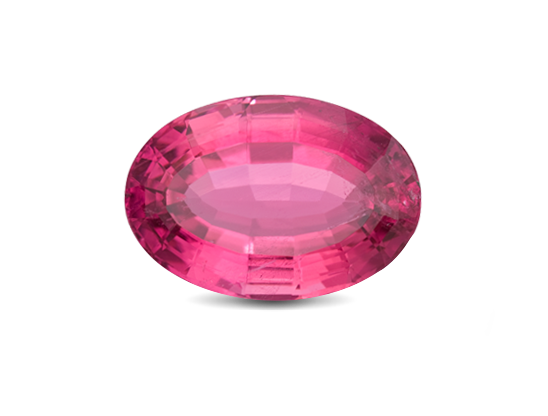Tourmalines have a wide variety of exciting colors with one of the widest color ranges of any gem.
ABOUT TOURMALINE
Tourmaline’s colors have many different causes. It’s generally agreed that traces of iron, and possibly titanium, induce green and blue colors. Manganese produces reds and pinks, and possibly yellows. Some pink and yellow tourmalines might owe their hues to color centers caused by radiation, which can be natural or laboratory-induced.
BIRTHSTONES & ANNIVERSARIES
Tourmaline is a birthstone for October, along with opal. Tourmaline is also the gem of the eighth anniversary.
1554
Francisco Spinoza’s expedition discovers “Brazilian emerald”: the first recorded green tourmaline crystal.
PYROELECTRIC
Tourmaline becomes electrically charged when heated. Also when squeezed: it’s piezoelectric too.
PARAIBA
Brazilian source famous for vivid blue to green tourmalines colored by copper.
FACTS
- Mineral: Tourmaline
- Chemistry:
- Elbaite Na(Li1.5,Al1.5)Al6Si6O18(BO3)3(OH)4
- Dravite NaMg3Al6Si6O18(BO3)3(OH)4
- Liddicoatite Ca(Li2Al)Al6Si6O18(BO3)3(OH)3F
- Chromedravite NaMg3Cr6Si6O18(BO3)3(OH)4
- Color: All colors
- Refractive index: 1.624 to 1.644
- Birefringence: 0.018 to 0.040
- Specific gravity: 3.06 (+0.20, -0.06)
- Mohs Hardness: 7 to 7.5
QUALITY FACTORS
Tourmaline’s varieties have a wide range of quality factors considerations.
COLOR
Tourmaline’s rainbow colors have a wide range of color intensity and tone.
CLARITY
Pink to red tourmaline often has more visible inclusions than green to blue varieties.
CUT
Tourmaline crystals are often long, leading cutters to cut slender finished stones.
CARAT WEIGHT
Tourmalines come in all shapes and sizes. The value change for size varies with the variety.
